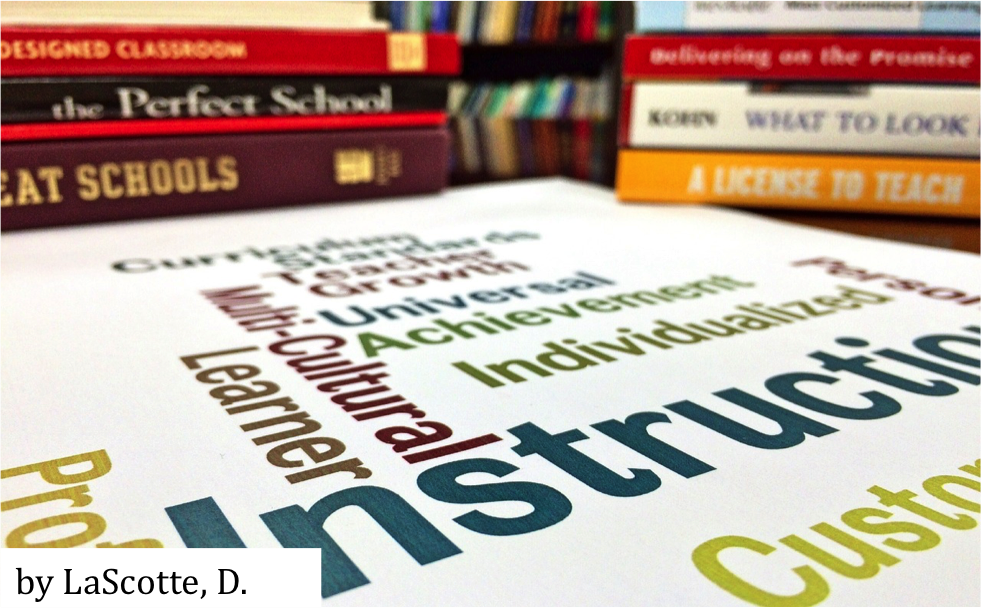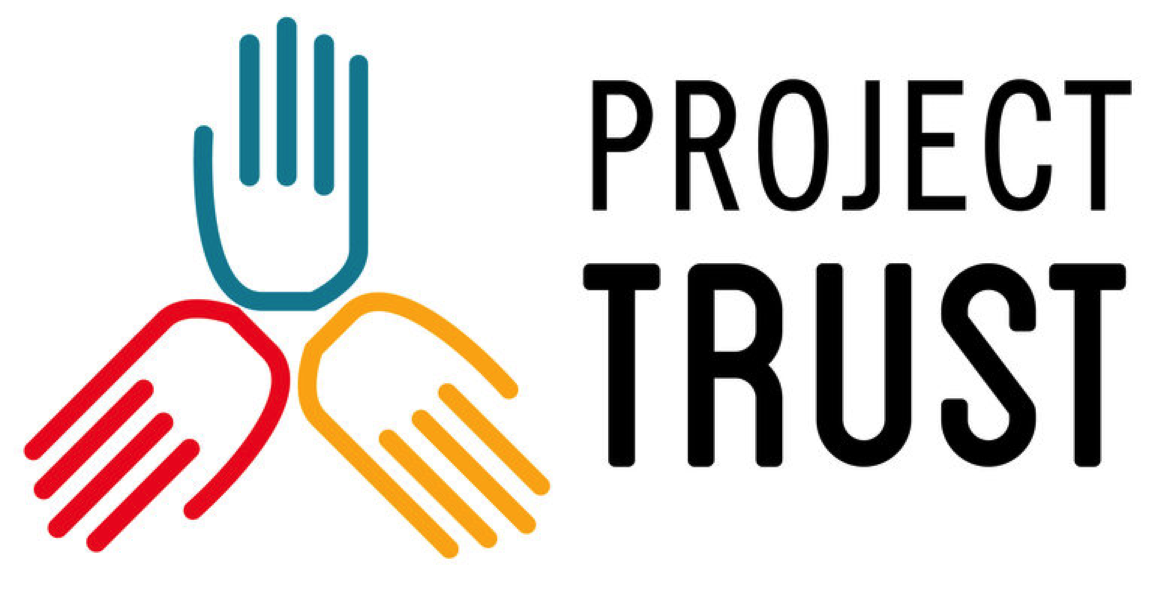Having learners pair up to discuss homework assignments and use presentation software to develop visual slides summarizing their homework visually might do more for acquisition than having learners use slides to support presentations.
Go into any classroom and you have a good chance of seeing a colleague or one of her students using presentation software to support a talk. I use slides (Microsoft’s PowerPoint), and so do my students. I suspect we often use presentation software badly. We bore our audiences, obscure our ideas, and hinder language and content learning. So in this article, I focus on how to use slides, such as PowerPoint or Apple’s Keynote, to better support language and content learning through interaction. I’ll begin by talking about the problems with using slides in the classroom. I’ll then discuss digital literacy and second language acquisition theory, and explain how I use slides to support student discussions rather than student presentations. I’ll then discuss limitations and suggestions for trying out the idea yourself. Currently, I’m a language teacher educator, but the technique is based on second language acquisition (SLA) theory and should work in language and content classes.
The Problem with Slides…and a Solution
Since its invention in the 1980s, PowerPoint has become ubiquitous (Alley, 2013). We, and our students, use it beyond, and in, the classroom. For example, I use slides to support conference talks as well as lessons in my teacher education classes. I have also used it to support lessons in university-level intensive English classes. In my listening-speaking classes, for example, I have used a PowerPoint template to demonstrate one basic model of the organization of an academic talk. My students use presentation software as well. My teacher education students use slideware when presenting at conferences and when teaching in their classrooms. My listening-speaking students also used the software in their class presentations. In the listening-speaking context, Ur (1984) stresses the benefits of English learners developing their listening abilities by listening to someone speaking to them in person. Because slides are intended to help the audience understand the speaker, in ESL classes, as well as in other contexts, that should mean that slides would support better listening comprehension and, through repeated listening comprehension practice, even listening development. Therefore, the use of slides by teachers, teacher education students, or English learners should benefit their respective audiences.
But often it seems that using slides doesn’t benefit anyone. Alley (2013) discusses the terms “PowerPointless” and “Death by PowerPoint” (p. 240). A recent Google search of the phrase “death by powerpoint” returned around 8 million hits. De Szendeffy (2005) argues that language learners may spend more time developing their slides than their oral remarks and that they may read out their remarks from their slides rather than speaking to their audience.
There is debate about whether the problem with using presentation software lies with the training people receive or with the tool itself. Many offer advice on creating better slides, implying that the issue is people using the tool ineffectively; this includes Alley (2013); De Szendeffy (2005); Kosslyn (2011); and the popular writing website from Purdue University: Purdue OWL (1995-2015). On the other hand, Tufte (2003; 2006) argues that the problem lies in the tool itself, not in its use, and claims that PowerPoint, by offering almost no content in its graphics and bulleted lists, distorts information and discourages evaluation of the speaker’s claims. As a remedy, Tufte (2006) recommends speakers give audiences well-written handouts illustrated with detailed graphics to encourage careful attention to and analysis of presentations. In contrast, De Szendeffy (2005) argues that since presentation software is so common, language learners need to know how to use it, and so benefit from training.
What may help is to train learners to work on their speaking and develop slides that use richer images along with fewer words written in sentences (Alley, 2013; De Szendeffy, 2005). Alley (2013) suggests presenters replace PowerPoint’s standard bulleted list with an “assertion-evidence” slide layout; the slide title is a claim stated as a sentence supported by evidence presented graphically in the slide’s body. In addition, Alley (2013) endorses the mostly visual TED talk style slide presentation. Finally, Alley (2013), and Heiman (2009), also suggest presenters consider a mostly visual approach to slides called Pecha Kucha (Japanese for ‘chit-chat,’ [Alley, 2013, p. 192]), in which brief talks are supported by visual slides (Klein and Dytham, n.d.).
Digital Literacy, SLA Theory, and an Application
Heiman’s (2009) suggestions have prompted me to think about my own use of slides and how my teacher education students and I can foster better digital literacy for language learners. Slides are not something our students should avoid. Better use of slides can contribute to learners’ L2 digital literacy (Healey et al., 2011). Digital literacy involves adept digital communication and is by definition social social (Dudeney, Hockly, & Pegrum, 2013; Gee & Hayes, 2011).
Language acquisition is also social. Interaction fosters L2 acquisition (Ellis, 2008; Gass, Behney, & Plonsky, 2013). Teachers encourage interaction as a means for learners to acquire English, to develop their productive and receptive skills, and to better understand what they read and listen to (Grabe, 2009; Vandergrift & Goh, 2012). Using the target language to work collaboratively at a shared computer supports L2 acquisition (Jeon-Ellis, Debski, & Wigglesworth, 2005), so there may be value in allowing students to work together at computers when developing more effective visuals and slides.
To take advantage of and to model for my students the benefits of collaborating at shared computers, I’ve long had my students work collaboratively in class at shared computers. I have recently begun applying this technique to the use of presentation software. I now have my students work together to discuss and create summaries of their homework using collaboratively developed short slide shows. The technique seems to foster digital literacy and better understanding of the content.
What I Do
Students in my classes have readings or viewings they need to complete for homework. Typically, we discuss the homework assignments in class using a “think-pair-share” technique (Lyman Jr., 1981, as cited in McTighe & Lyman Jr., 1988). In my computer-assisted language learning (CALL) class, I decided to try integrating PowerPoint into an adaptation of think-pair-share: students first do something on their own (think), then typically work with one partner on a task (pair), then come together as a whole group to present, discuss, or debrief (share). The activity works as follows.
Steps
- Needs for the activity:
- Students need access to some means of presenting information in a mostly visual format. In my CALL classes, that usually means school-provided desktop computers, and presentation software (typically PowerPoint). Students could also use laptops or tablet computers and appropriate software. Appropriate software could include presentation software, word processors, drawing programs, or even mind-mapping programs like Freemind (Mueller, Polansky, Foltin, & Polivaev, 2000-2010). But computers are not even necessary. Students can use notebooks, large pieces of paper, or areas of a chalkboard, or marker board, or small dry-erase boards. The main criteria are that students will need to work in groups to develop a visual representation, and others in the class will need to see the work of each group. This idea is not original. I’ve used a version of this idea in which students draw on paper (Pollard & Hess, 1997).
- Students need to have completed a homework assignment before class. In my classes of undergraduate and MA-level prospective teachers, this is often a reading selection, but it could be a viewing or listening selection.
2. In class, I pair or group students. I limit groups to no more than three students. Following Ellis (2008), I intentionally choose groups to encourage interaction. Because I seek to model good practice for my teacher education students, the criteria I use for grouping students include those language teachers commonly use. Sometimes students choose partners from those seated nearby. But I also use my knowledge of my students to group them across L1s or to group more talkative students with more reserved students. Everything I have mentioned here is similar to what Brinton (2014) recommends.
3. In groups, students discuss their homework and develop slide shows that offer their summaries and reactions to the homework. Slide shows are meant to be mostly visual, with a few well-chosen words. I might limit the words to no more than 10. Groups typically have about 15 minutes to discuss and develop their summaries and reactions.
4. Groups then briefly share their short presentations. I can put these slide shows up on the screen in front of the classroom, and, optionally, students can also post their brief slide shows into our course website.
When I use this activity for the first time, students and I do talk about the options they have for presenting information visually. I allow clip art, though that’s not recommended (De Szendeffy, 2005). I also demonstrate Microsoft’s “SmartArt” graphics as one means of encouraging visual summaries.
Anecdotally, I’ve observed that using slides in this manner contributes to learning the content in my CALL classes. The major reason, I think, is the collaboration (Jeon-Ellis, Debski, & Wigglesworth, 2005). I believe that the interaction fosters acquisition of the discourse of the discipline. Gee and Hays (2011) discuss how communities use discourse to develop and share knowledge and how that discourse is increasingly digital in nature. In our class, learners contribute to understanding in their groups, and groups then help construct a class understanding of the content.
Limitations
I can only report on my own anecdotal impressions linked to my own reading of the literature. Testing this activity, or at least gathering students’ impressions of it, would help us understand how interaction while developing slides at a computer might add to students’ acquisition of content and language.
One could object that the use of clip art, or Microsoft’s SmartArt, in slides with limited numbers of words endorses the worst of Tufte’s (2006) criticisms of PowerPoint – that the medium distorts information and cannot convey complex ideas the way writing can. Indeed, in the future, I may ask students to collaborate outside the classroom to develop their visual summaries using Alley’s ‘assertion-evidence’ approach (2013). In addition, while I focused here on slides because they are widely used, an alternative such as Prezi (2015) may be worth considering. However, the goal of the activity is really the discussion of the ideas as an aid to their acquisition, rather than presentation, and there are findings in the CALL literature to support this use (Jeon-Ellis, Debski, & Wigglesworth, 2005).
Trying the Idea Out for Yourself
Slides still have a place in talks. I’m especially interested in the use of more visual elements to support presentations as recommended by Alley (2013). I’ve used mostly visual slides when I’ve shared these ideas at conferences (Madden, 2014, March; 2014, November). But using slides as a more flexible medium, more of a conversation starter rather than as a finished part of a presentation, may do more to help learners.
Why not try out the activity presented here to see how well it would work in your class? After you finish reading this article, share your ideas with a colleague who has also read the article; then the two of you should start up your presentation software, or graphics program, or word processor, or take out a piece of paper, and try to visually represent the ideas from the article, and your reaction to them. That can give you both a sense of whether this activity would be helpful to you and your students.
References
Alley, M. (2013). The craft of scientific presentations: Critical steps to succeed and critical errors to avoid (2nd ed.). New York: Springer.
Brinton, D. M. (2014). Tools and techniques of effective second / foreign language. teaching. In M. Celce-Murcia, D. M., Brinton, & M. A. Snow (Eds.), Teaching English as a second or foreign language (pp. 340-361). Boston, MA: National Geographic Learning.
De Szendeffy, J. (2005). A practical guide to using computers in language teaching. Ann Arbor, MI: University of Michigan Press.
Dudeney, G., Hockly, N., & Pegrum, M. (2013). Digital literacies. New York: Pearson.
Ellis, R. (2008, December). Principles of instructed second language acquisition. CAL Digest. Retrieved May 21, 2015, from http://www.cal.org/content/download/1553/16478/file/PrinciplesofInstructedSecondLanguageAcquisition.pdf
Gass, S. M., Behney, J., & Plonsky, L. (2013). Second language acquisition: An introductory course (4th ed.). New York: Routledge.
Grabe, W. (2009). Reading in a second language: Moving from theory to practice. New York: Cambridge University Press.
Gee., J.P., & Hayes, E. R. (2011). Language and learning in the digital age. New York: Routledge.
Heiman, J. (2009, October). Subverting the ‘prankish conspiracy’ of PowerPoint: Visual narrative and the Pecha Kucha method. Paper presented at the meeting of the Great Plains Alliance on Computers and Writing, St. Cloud State University, St. Cloud, MN.
Healey, D., Hanson-Smith, E., Hubbard, P., Ioannou-Georgiou, S., Kessler, G., & Ware, P. (2011). TESOL technology standards: Description, implementation, integration. Alexandria, VA: Teachers of English to Speakers of Other Languages, Inc.
Jeon-Ellis, G., Debski, R., & Wigglesworth, G. (2005, September). Oral interaction around computers in the project-oriented CALL classroom. Language Learning & Technology, 9 (3), 121-145. Retrieved May 21, 2015, from http://llt.msu.edu/vol9num3/jeon/default.html
Klein, A., & Dytham, M. (n.d.). PechaKucha 20×20. Retrieved May 21, 2015, from http://www.pechakucha.org
Kosslyn, S. M. (2011). Better PowerPoint: Quick fixes based on how your audience thinks. New York: Oxford.
Madden, J. P. (2014, March). Using presentation software to foster discussion and support learning. Paper presented in the Computer-Assisted Language Learning Interest Section (CALL-IS) Electronic Village at the annual meeting of Teachers of English to Speakers of Other Languages (TESOL) International Association, Portland, OR.
Madden, J. P. (2014, November). Using slides to spark discussion and learning. Paper presented at the Minnesota English Learner Education conference, Bloomington, MN.
McTighe, J., & Lyman Jr., F. T. (1988, April). Cueing thinking in the classroom: The promise of theory-embedded tools. Educational Leadership, 45 (7), 18-24.
Mueller, J., Polansky, D., Foltin, C., & Polivaev, D. (2000-2010). Freemind (Version 0.9.0) [Computer software]. Retrieved May 21, 2015, from http://freemind.sourceforge.net/wiki/index.php/Main_Page
Pollard, L., & Hess, H. (1997). Zero prep: Ready-to-go activities for the language classroom. Burlingame CA: Alta.
Prezi – Presentation Software. (2015). Retrieved May 21, 2015, from https://prezi.com/
Purdue OWL. (1995-2015). Purdue OWL: Designing effective PowerPoint presentations. Retrieved May 21, 2015, from https://owl.english.purdue.edu/owl/resource/686/01/
Tufte, E. R. (2003, September). The cognitive style of PowerPoint. Cheshire, CT: Graphics Press.
Tufte, E. R. (2006). Beautiful evidence. Cheshire, CT: Graphics Press.
Vandergrift, L., & Goh, C. C. M. (2012). Teaching and learning second language listening. New York: Routledge.
Ur, P. (1984). Teaching listening comprehension. New York: Cambridge University Press.







